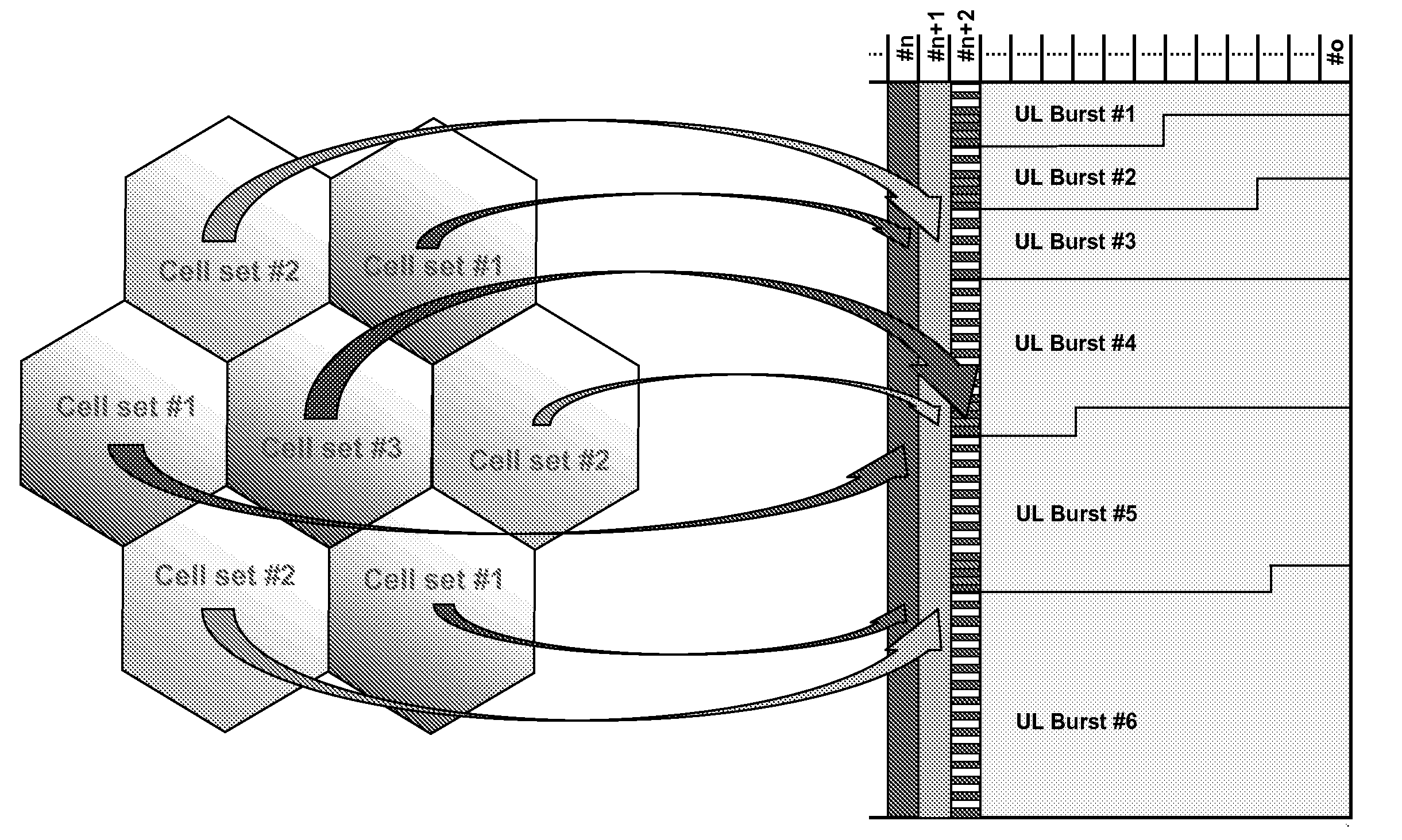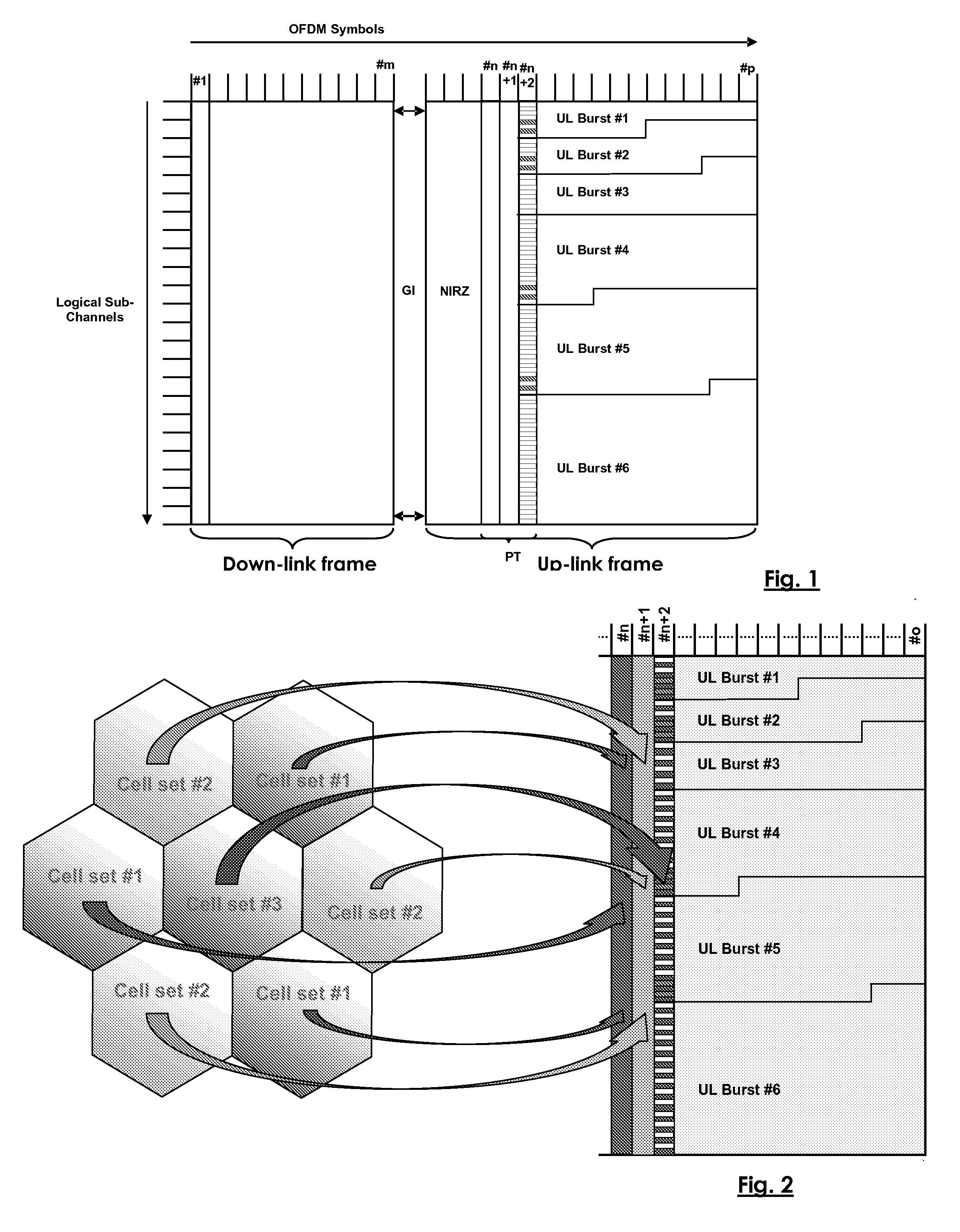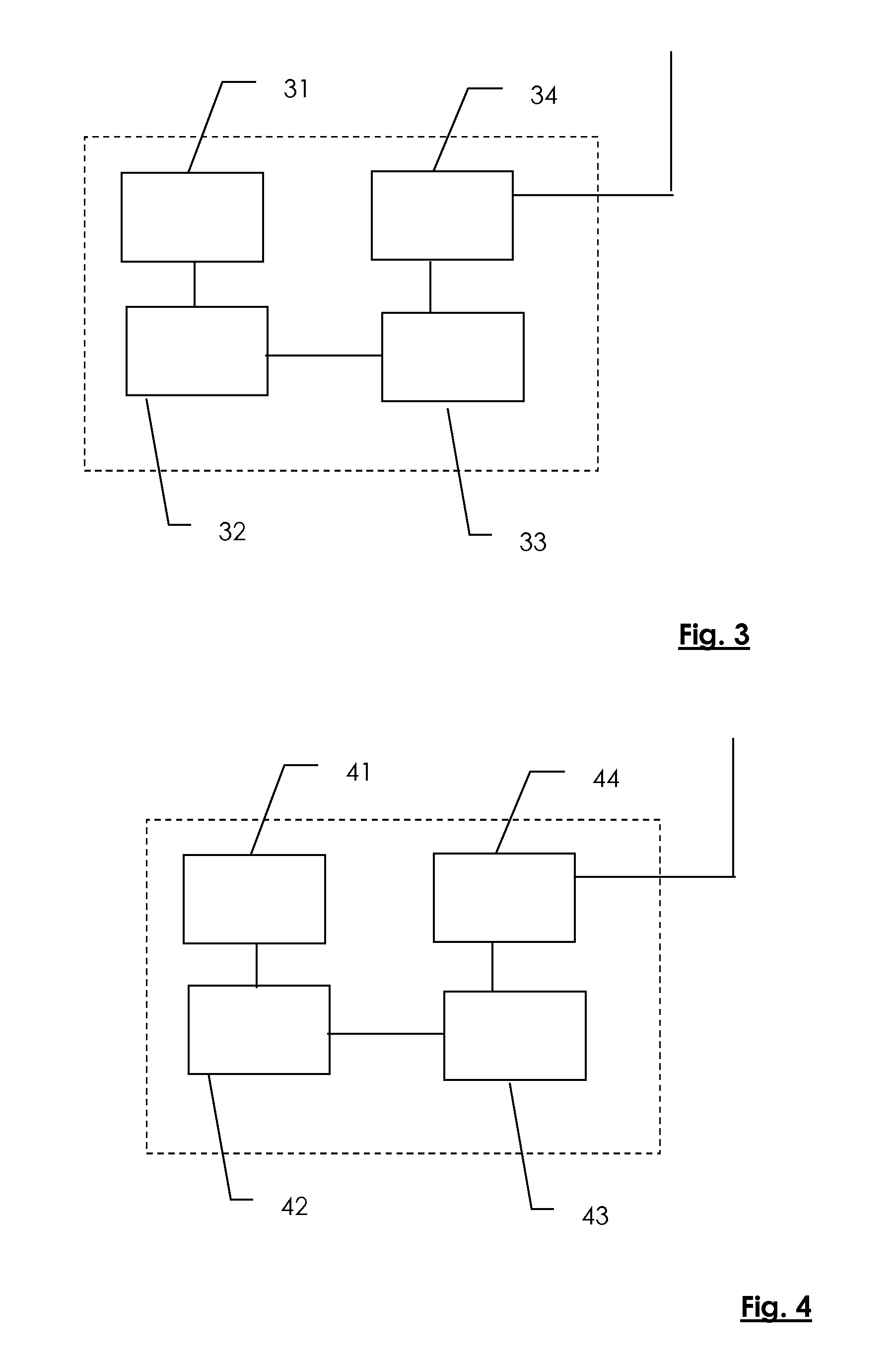Method for improving inter cell interference cancellation in an cellular radio communication system and corresponding base station and subscriber station
- Summary
- Abstract
- Description
- Claims
- Application Information
AI Technical Summary
Benefits of technology
Problems solved by technology
Method used
Image
Examples
Embodiment Construction
[0033]FIG. 1 shows a OFDM frame structure able to support a method according to the present invention. This OFDM frame structure is used in the framework of a multi channel communication network employing OFDMA as technology on each sub-channel. OFMDA allows resource allocations in the frequency domain and in the time domain, where orthogonality of the resource elements in frequency domain, the so-called sub-carriers, allows for a narrow spacing of the latter ones and thus and efficient usage of the frequency resource. A burst which is destined to an end user comprises consequently a frequency extension and a time extension. In this context, a frame comprises bursts which themselves are constituted of OFDM symbols sent on the different sub-channels.
[0034]In this embodiment of the invention, the radio communication system is a TDD (Time Division Duplex) system so that first a downlink frame is sent followed by an uplink frame. A person skilled in the art would nevertheless have no di...
PUM
 Login to View More
Login to View More Abstract
Description
Claims
Application Information
 Login to View More
Login to View More - R&D
- Intellectual Property
- Life Sciences
- Materials
- Tech Scout
- Unparalleled Data Quality
- Higher Quality Content
- 60% Fewer Hallucinations
Browse by: Latest US Patents, China's latest patents, Technical Efficacy Thesaurus, Application Domain, Technology Topic, Popular Technical Reports.
© 2025 PatSnap. All rights reserved.Legal|Privacy policy|Modern Slavery Act Transparency Statement|Sitemap|About US| Contact US: help@patsnap.com



